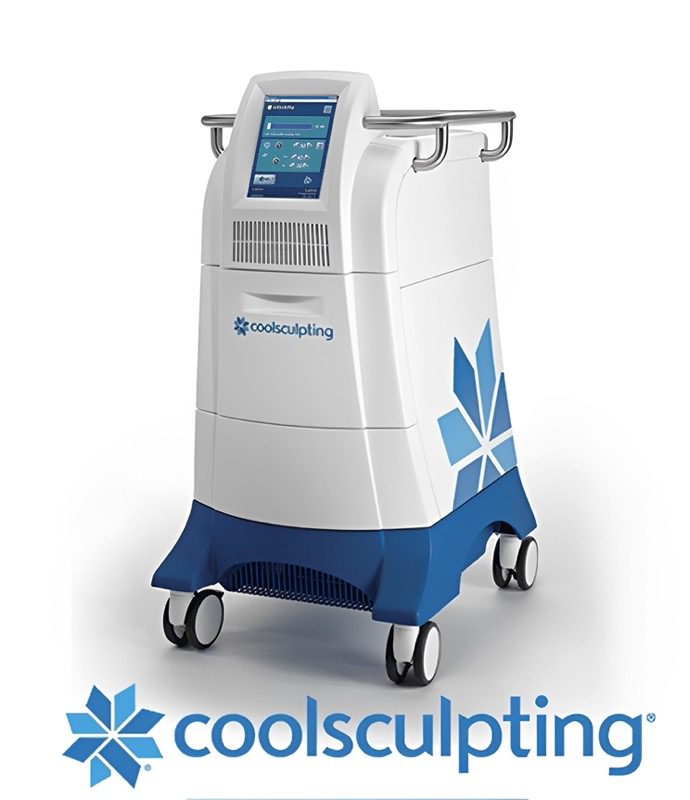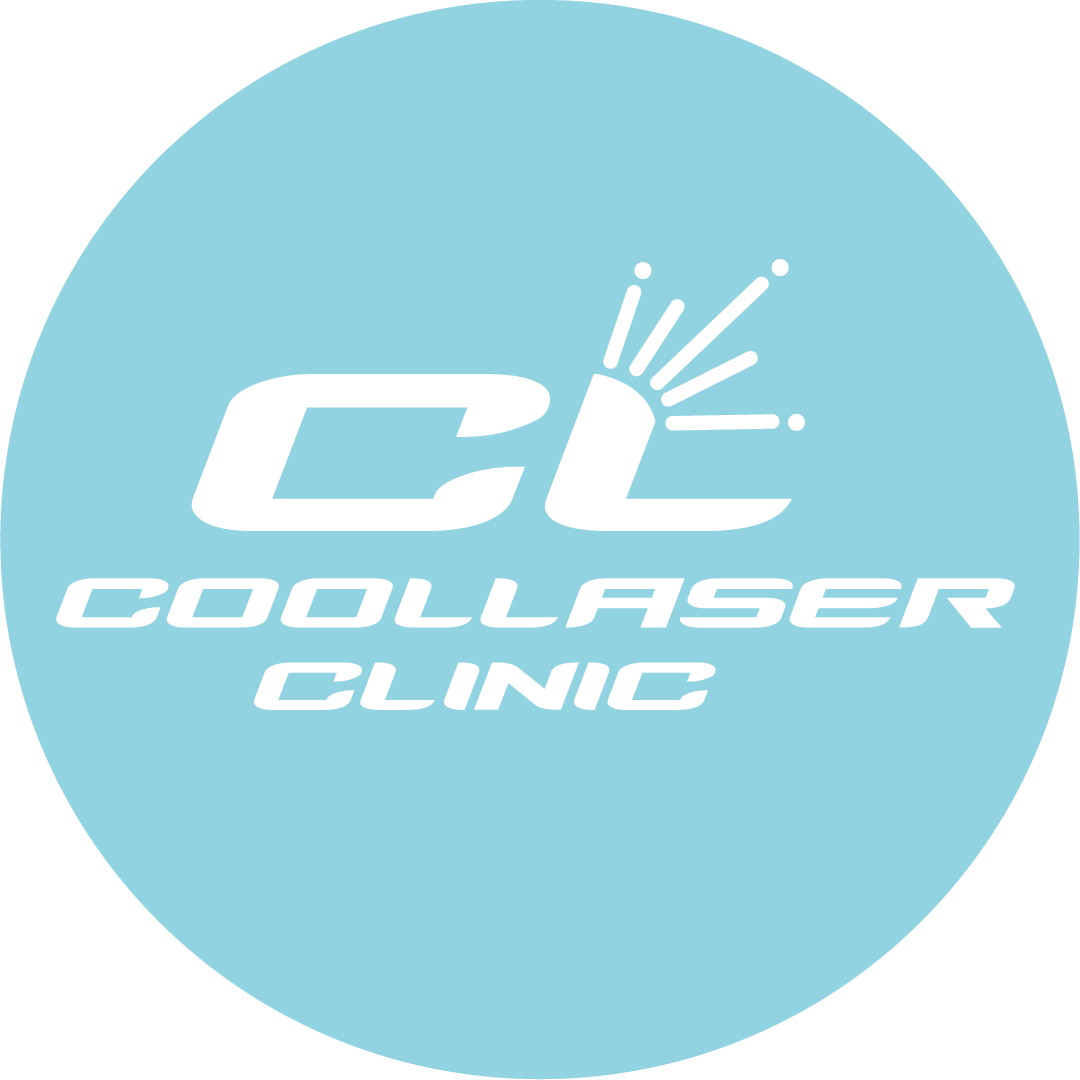STDs, STIs, STDs: what are the differences?
Sexually transmitted diseases, STIs and STDs (sexually transmitted infections and sexually transmitted diseases) are common. Experts from the World Health Organization conducted a study and found that 1 out of 6 people worldwide has an STD (sexually transmitted disease).Sexually transmitted diseases, STIs and STDs (sexually transmitted infections and sexually transmitted diseases) are common. Experts from the World Health Organization conducted a study and found that 1 out of 6 people worldwide has an STD (sexually transmitted disease).
These three groups of diseases mean roughly the same thing to the average person. When discussing a number of ailments contracted sexually, the three definitions are often used in everyday life, almost as synonyms. You will now learn how they differ from each other.
What are sexually transmitted diseases
Venereal disease is the oldest and most common term for a group of diseases. This group of diseases is characterized by sexual transmission of the causative agent of the disease, less often infection can occur through domestic means.
Venereal diseases:
- Gonorrhea
- Syphilis
- Chlamydia
- Soft chancre
- Trichomoniasis
- inguinal granuloma (donovanosis).
- Venereal lymphogranuloma.
What is an STI
STIs (sexually transmitted infections) – the term refers not to the diseases themselves, but to the name of the infectious agent. In other words, the disease sounds like syphilis and the infection is pale treponema. STIs belong to a broader group of infectious diseases than STDs. They are also sexually transmitted.
STIs, in addition to sexually transmitted diseases, include:
- Genital herpes
- Papillomavirus infection
- Candidiasis
- Gardnerellosis
- Ureaplasmosis
- Mycoplasmosis
- certain viral hepatitis
What is the difference between STIs and STDs
The group of sexually transmitted infections includes opportunistic microorganisms that cause pathologies if their number in the body increases significantly.
Conditionally pathogenic microorganisms:
- Ureoplasmas
- Mycoplasmas
- Candidae
- Gardnerellae
What is an STD
STD – this term encompasses a broader group of diseases than STIs and sexually transmitted diseases. In addition to the first two groups of diseases, STDs include parasitic and viral diseases. These diseases can be caused by: infections, viruses or parasitic skin diseases that can be contracted sexually.
Parasitic diseases: scabies, phthiriasis (pubic lice) and molluscum contagiosum.
STDs – sexually transmitted diseases
There is a term that combines all three groups of diseases into one name – STDs (predominantly sexually transmitted diseases).
Possible routes of STD transmission
- Sexually
- Domestic
- Through bodily contact with an infected person (kissing, hugging)
- Airborne (herpes)
- With blood transfusions
- In medical manipulation
- With intravenous drug use
Let’s go into more detail about how you can get a household infection:
- Through other people’s clothes close to the body, especially underwear (new clothes should be washed after the store, before wearing).
- Use of other people’s towels, bedding, washcloths, personal hygiene products
- By contact with surfaces: public toilets, couches, public bathrooms and showers
- Through money (if you don’t wash your hands afterwards or hide it in your underwear)
What STD treatment regimens depend on
Regardless of which of the major groups the disease belongs to, the principles and treatment regimens depend:
- From the type of infection
- From the stage of the disease
- From the level of organ damage
- From the type of body system: male or female
Where STIs are treated in Kiev
STIs in Kiev are treated by Professor, Doctor of Medical Sciences Fedorich P.V. in Coolaser Clinic. Here you can take tests and get a full treatment scheme.
Fedorich P.V. – Doctor of Medical Sciences, Professor of the Ukrainian Military Medical Academy, doctor – dermatovenerologist of the highest category.
- 1998 – Candidate of Medical Sciences
- 2002 – dermatovenerologist of the highest category
- 2003 – Associate Professor
- 2011 – PhD
- 2013 – Member of the European Academy of Dermatology and Venereology
- 2014 – member of the board of editorial consultants of the Ukrainian medical journal Therapia
- 2019 – Active Member (Academician) of the International Academy of Culture of Safety, Ecology and Health
- 2021 – Doctor of Medical Sciences
- 2021 – member of the editorial board of the journal “Military Medicine of Ukraine”
Dr. Fedorich conducted research based on the results of regional monitoring of the incidence of the most common STIs in the city of Kiev.
The main health and social problems associated with the high prevalence of sexually transmitted infections:
- Complications and consequences often arise
- Negative impact on demographics
- Deterioration of the health of the population as a whole
According to the World Health Organization, more than 330 million patients with urogenital infections are registered annually in the world, and the most common pathogens are Chlamydiatrachomatis (causative agent of chlamydia), Trichomonasvaginalis (causative agent of trichomoniasis), Ureaplasmaurealyticum (ureaplasmas).
In Ukraine at least 2 million people are annually infected with STIs. Tendencies to decrease this indicator are not registered yet. The urgency of the problem is due to widespread complications:
- Secondary infertility
- Ectopic pregnancy
- Development of abnormalities during pregnancy
- Abnormal labor
- Intrauterine infection of the fetus
- Erectile dysfunction
- Impotence
At the current stage of medical development, it is difficult to completely cure some STIs. The fact is that these diseases are multifocal, and if one family member becomes ill, there is an increased risk that the sexual partner and other family members will become infected through domestic or other means. There is an increased risk of frequent relapses and re-infection from each other in such patients.
Monitoring of morbidity of the most common STIs in the city of Kyiv
Using the polymerase chain reaction method (PCR – today it is the most specific and sensitive method for diagnosing STIs), STI screening was carried out. Biological material was obtained in 2017 from genitourinary organs in a group of patients with sexually transmitted infections.
The clinical and laboratory study was conducted on the basis of the Alexandrovsky Clinical Hospital of Kiev. 607 patients of both sexes were examined, including 295 (48.6%) women and 312 men (51.4%). Patients aged 28-36 years were examined.
Overall detection rates of sexually transmitted infections in the group of examined patients

Explanation:Explanation:
I- total number of examined persons (100%)
II- Chlamydia trachomatis (causative agent of chlamydia)
IIІІ- Mycoplasma hominis (causative agent of mycoplasmosis)
IV- Mycoplasma genitalium (causative agent of mycoplasmosis)
V-Ureaplasma urealyticum (the causative agent of ureaplasmosis)
VI- Trichomonas vaginalis (causative agent of trichomoniasis)
VII- Human papillomavirus (human papillomavirus)
VII- Neisseria gonorrhoae (causative agent of gonorrhea)
Conclusions on the results of the study conducted:
- Human papillomavirus (53.2%) and ureaplasma pathogen (48.77%) occur in about half of patients (they are the most common)
- Chlamydia and mycoplasmosis pathogens are found in more than 20% of cases (1 in 5 patients)
- The remaining pathogens occur in less than 10% of cases
Self-treatment of infectious diseases can lead to serious consequences!
Symptoms of STIs in men
Infection with a sexually transmitted disease or STI occurs through unprotected sex with someone who is infected. One casual sexual intercourse is enough; in some cases, infection occurs through domestic or other means.
Sexually transmitted infectious diseases are very insidious, as they go unnoticed for a long time, and the symptoms appear at later stages. If you do not consult a doctor at the first signs and “harmless implicit symptoms”, the disease becomes chronic or hidden.
In some cases, these chronic conditions are difficult or impossible to treat. The chronic nature of STIs can contribute to the consequences for men:
- Inflammation of the genitourinary system
- Weakened erection
- Premature ejaculation
- Prostatitis
- Adenoma
- Infertility
- Impotence
Symptoms of sexually transmitted diseases, STIs, STDs in men, which should alert and become a reason to contact a doctor:
- Unusual discharge from the penis of yellow or white color, with an unpleasant odor
- Itching and burning
- Painful urination, frequent urges.
- Red or pink rash, spots, redness on different parts of the body
- Pulling or sharp pains in the lower abdomen or testicles
- Enlargement of lymph nodes (especially in the groin area)
- Small vesicles, warts, erosions, ulcers and masses in the mouth, lips, anus area
- Abnormal tissue overgrowth around the anus and on the penis
- Painful sensations during sexual intercourse
- Ejaculation disorder
- Increase in body temperature
Self-treatment of infectious diseases can lead to complications and chronicity of the disease! Any signs of sexually transmitted diseases should be alarming and become a reason for immediate visit to a doctor!
Symptoms of STIs in women
Common symptoms of STDs that should alert women:
- Increase in the amount of discharge from the vagina, changes in the color and texture of the discharge
- Unpleasant vaginal odor
- Painful sensations when urinating
- Itching and burning in the genital area
- Unpleasant sensations during intimacy
- Malaise, lethargy, headache, drowsiness
- Bleeding in the middle of the cycle, delay of menstruation for more than 3-5 days
If you notice the first signs of STDs, STIs, STDs, seek medical attention immediately!
Common sexually transmitted diseases, STIs, STDs in Kiev
In order to detect and successfully treat STDs in time, it is necessary to have a general idea of how they manifest themselves.
Genital herpes
The herpes virus itself is of two types. The first type more often affects the oral mucosa, looks like vesicles on the lips, it is called oral (labial) herpes. The area affected mouth and lips.
Herpes virus type 2 causes genital herpes more often, but both types can cause abnormalities in the genital area and mouth area. Recurrences are much more common with the second type.
In genital herpes, blisters appear on the outer surface of the genitals. Patients complain of itching and burning, after a few days they burst and turn into small ulcers. It is easy to get infected, extremely difficult to cure, but recurrences can be minimized.
Syphilis
Syphilis is a chronic systemic infectious and venereal disease with lesions of the skin, mucous membranes, internal organs, bones, nervous system with successive stages of the disease, caused by pale treponema bacteria.
The first symptom occurs a few weeks after infection. An inconspicuous small ulcer appears on the genitals. After 2 weeks it becomes larger, in parallel there is inflammation of the lymph nodes. The symptoms are the same in women and men.
The primary ulcer is called a syphilitic chancre. This ulcer can occur anywhere on the skin or mucosa (depending on the route of infection). If the infection is through the blood, the syphilitic chancre may not appear at all.
IMPORTANT: in Ukraine, syphilis is treated only in public institutions. Treatment in private clinics is prohibited by law.IMPORTANT: in Ukraine, syphilis is treated only in public institutions. Treatment in private clinics is prohibited by law.
Trichomoniasis
Trichomoniasis is an invasive disease of organs of human urogenital system caused by vaginal trichomonads. The disease is dangerous with complications causing infertility and pregnancy abnormalities. The habitat of the bacteria in the male body: urethra, seminal vesicles and prostate gland. In women, they live in the vagina.
Causes urethritis when first ingested. The incubation period is from 1 week to 1 month. There is often a change in the color of vaginal discharge in women. They acquire a greenish or yellowish tint and an unpleasant odor.
Chlamydia
Chlamydia is an infectious disease that is mainly sexually transmitted and is caused by chlamydia. In rare cases, it can be transmitted through the household. The first signs can be detected after a week: frequent and painful urination, uterine bleeding in the middle of the cycle, pain in the lower abdomen and lower back.
Gonorrhea (tripper)
Gonorrhea (tripper) is an infectious disease caused by Diplococcus gonococcus gram-negative, which affects the mucous membranes of the genitourinary organs, may affect the mucosa of the rectum and conjunctiva. It can run for a long time latently, without symptoms. Signs that occur in patients: yellow and green purulent discharge from the genitals with an unpleasant odor, frequent painful urination and sharp pain in the lower abdomen.
Human papillomavirus
Human papillomavirus – a virus that is transmitted only from person to person and leads to changes in tissue growth. Science knows more than 100 types of human papillomavirus, only 40 of them are capable of causing lesions of the genitals, anus and the appearance of acute condylomas. Some of them are harmless, others cause warts, in some cases cancer.
Self-medication of infectious diseases can lead to complications, transition to an acute form or chronic disease and other negative consequences. Often patients who self-medicate “remove” the symptoms, not realizing that the disease remains and brings harm and further. The risk of infection of the sexual partner increases.
Prevention of sexually transmitted infections
Counseling and other measures aimed at promoting good behavior among adolescents and young people are widespread. It is important to inform and teach the use of STI protection measures that additionally prevent unwanted pregnancies;
– Education about sexuality, the existence of STDs, STIs, STDs, pre- and post-test counseling for diseases and infections
– Promotion of condom use and other protective contraceptives
– Measures regarding the upbringing of children and adolescents
– Interventions for populations such as sex workers, drug users, injecting drug users and people with reduced social responsibility
Through such measures and comprehensive education, people’s ability to recognize STIs in their early stages increases. The likelihood of seeking medical attention in a timely manner is greatly increased. It is important to seek medical attention together with sexual partners to increase the likelihood of a successful recovery.
Due to low public awareness and lack of training among health care professionals, early detection of STIs and STDs is difficult. Many generations have been shy about talking about sex and the safety measures that help prevent STIs and unwanted pregnancies. Unfortunately, these topics are still “taboo” in many families.
Measures that increase protection against sexually transmitted diseases, STIs, STDs
– The risk of infection is reduced if there is one proven regular sexual partner who is intimate only with you
– Condom use: female or male condoms
– In cases of unprotected sexual intercourse, it is recommended to use Miramistin or other disinfectant, it helps to significantly reduce the risks of infection
– It is important to report any suspicions or symptoms to your doctor and have them diagnosed
– At least once a year you should visit a gynecologist/urologist to detect genital diseases and other pathologies at early stages
Diagnosis of sexually transmitted diseases, STIs, STDs
Accurate diagnostic tests that detect sexually transmitted infections in their early stages are widely used in many countries. The most important advantage is that they detect the disease with high accuracy, regardless of whether there are symptoms or not.
There are cases when patients have to wait a long time for the results or return to the institution where the diagnosis was made. Treatment and monitoring of the patient’s condition can be complicated, but in our country the situation is more or less normal.
In Kiev and other cities of Ukraine there is an opportunity to conduct a quick and accurate diagnosis of virtually all common sexually transmitted diseases, STIs and STDs.
The Coolaser clinic is available for medical consultation:
- Dermatovenerologist
- Urologist
- Gynecologist
Leading physician: Dr. Pavel Fedorich.

You can make tests for STDs, STIs, STDs, get a treatment scheme and be observed by doctors of our clinic until full recovery!
Treatment of sexually transmitted diseases, STIs, STDs
The treatment regimen for infectious diseases depends largely on the type of infection and the degree of neglect of each individual case.
Effective remedies are utilized:
- Chlamydia, syphilis, gonorrhea, and trichomoniasis are usually cured with single-dose antibiotic regimens
- Herpes and HIV are not completely cured, but therapy is prescribed on the basis of taking antiretroviral drugs that mitigate the course of the disease, reduce and contain the viral load (the likelihood of infection of a sexual partner is significantly reduced).
- Hepatitis B is treated with immunomodulators (interferon) and antiretrovirals, which help control the virus and slow liver destruction
Recently, the resistance of STIs to drugs and antibiotics has increased, reducing the variability of treatment. Gonorrhea is becoming more resistant to many broad-spectrum drugs, making it increasingly difficult to treat.
Other predominantly sexually transmitted infectious diseases are less resistant to modern drugs, and their resistance is not as dramatically increased as that of gonorrhea. It is therefore critical to be prophylactic, detect these diseases in time, and seek medical attention in a timely manner.
STI vaccines
The mass production and widespread availability of highly effective vaccines against hepatitis B and human papillomavirus has been a major global achievement. Hepatitis B vaccination is routinely given to children in many countries of the world, thus reducing morbidity and mortality from chronic liver disease and liver cancer.
Vaccination in childhood (11 to 15 years of age) against human papillomavirus can significantly reduce cervical cancer deaths in women.
Herpes and HIV vaccines are being developed and some are being tested at the moment. In the next few years, scientists predict that HIV and herpes vaccines will be completed. Unfortunately, work on vaccines against trichomoniasis, gonorrhea, chlamydia and syphilis is at an earlier stage.
Venereal diseases, STIs, STDs: diagnosis and treatment in Kiev
The Coolaser clinic diagnoses and treats various genital diseases, including STIs and STDs. You can get a consultation on issues related to women’s or men’s health at the clinic of aesthetic medicine. We diagnose diseases, prescribe an effective individualized treatment regimen and manage the patient. We work with you until complete cure or achieve persistent remission, then prescribe supportive therapy.
Coolaser clinic is located at the address: Kiev, Pechersk, Konovaltsa street 32B.
Take care of your health and at the first suspicion of venereal diseases, STIs, STDs, contact us for qualified medical help!
| 1-я встреча — сбор анамнеза, принятие решения на комплекс медицинских мероприятий, инструктаж по подготовке к взятию анализов | 1200 грн | |
| 2-я встреча — взятие комплекса диагностических анализов из мочеполовой системы; расходные материалы и инструменты, транспортировка в лабораторию, выполнение тестов, заполнение бланков анализов, их транспортировка | 8000 грн | |
| 3-я встреча — выдача результата с устным комментарием | 600 грн | |
| 4-я встреча — разработка схемы лечения комплекса инфекций, передающихся половым путем, передача схемы с устным комментарием. Рассчитывается индивидуально. Оплачивается на 3 встрече. | от 600 грн |
| 1-я встреча — сбор анамнеза, принятие решения на комплекс медицинских мероприятий, инструктаж по подготовке к взятию анализов | 1200 грн | |
| 2-я встреча — взятие комплекса диагностических анализов из мочеполовой системы; расходные материалы и инструменты, транспортировка в лабораторию, выполнение тестов, заполнение бланков анализов, их транспортировка | 8000 грн | |
| 3-я встреча — выдача результата с устным комментарием | 600 грн | |
| 4-я встреча — разработка схемы лечения комплекса инфекций, передающихся половым путем, передача схемы с устным комментарием. Рассчитывается индивидуально. Оплачивается на 3 встрече. | от 600 грн |
Photo materials

Useful articles

What is Asperger’s syndrome? Asperger’s syndrome is a form of autism that can significantly affect a person’s life It is often referred to as “high-functioning autism.” People with this disorder […]

Отзывы про операции на веках от знаменитостей. Плюсы и минусы блефаропластики. Фото до и после коррекции век.

What is couperosis Couperosis is a skin condition in which red vascular stars and vascular mesh appear on the face. This is due to the dilation of capillaries that are […]

What patients say about cryolipolysis: reviews and comments Cryolipolysis reviews are the most popular search term to help you find out if this procedure is right for you. Cryolipolysis is […]
Reviews







